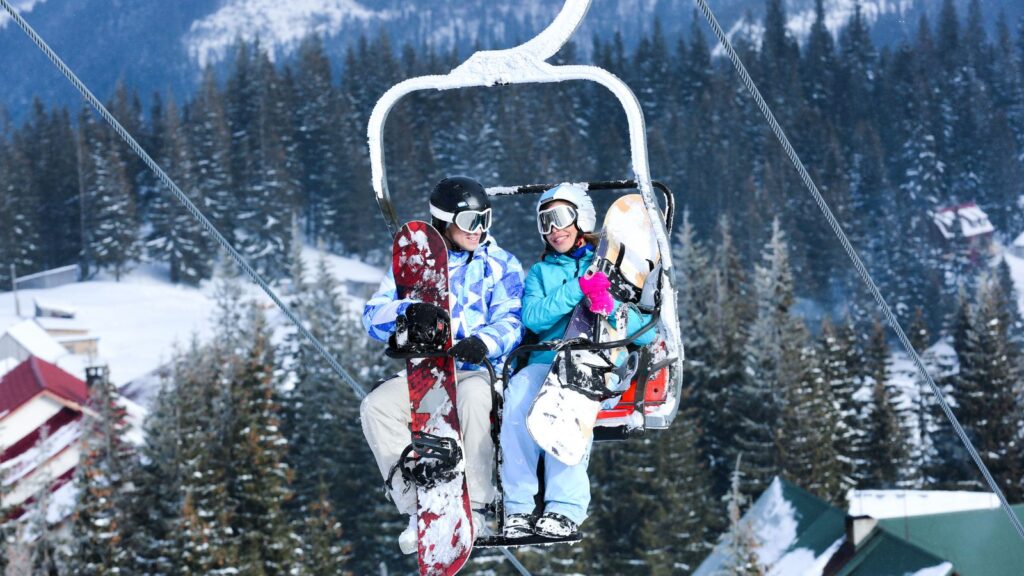Ski resorts across the globe are stepping up their game, implementing practices that minimise their carbon footprint. From solar-powered lifts to waste reduction initiatives, the industry is making strides towards sustainability.
This article explores the concept of Ski Travel Sustainability, shedding light on how resorts are becoming eco-friendlier and how skiers can contribute to the cause. It’s not just about enjoying the sport, it’s about preserving the very environment that makes it possible.
Ski Travel Sustainability
With winter sports gaining global traction, the Importance of Ski Travel Sustainability cannot be overstressed. Sustainability in this sector is about more than just minimising carbon emissions and waste. It’s about preserving the pristine landscapes that aficionados come to experience and enjoy.
Ski resorts and their visitors generate substantial environmental impacts, including deforestation, habitat destruction, and pollution. These effects threaten not only the environment but also the appeal and survival of the sport. Skiing relies on nature’s grandeur, and if the environment ain’t right, there won’t be ski travel to speak of.
In the face of such threats, sustainable ski travel becomes an imperative. This means adopting eco-friendly initiatives at resorts like solar-powered lifts, waste reduction programs, and energy-efficient facilities. For travellers, it implies making conscious choices, such as opting for green ski resorts, reducing waste, supporting local economies, and offsetting carbon emissions from their travel.
A noteworthy example is the Swiss Alps, where ski resorts are pioneering innovative ecological measures. In the small resort of Hoch-Ybrig, a state-of-the-art water recovery system has been installed. It captures and treats melted snow, reusing it to generate artificial snow. This step is a significant move in water conservation, an essential aspect of Ski Travel Sustainability.

Sustainable Practices in Ski Resorts
Adopting sustainable practices in ski resorts is the industry’s latest attempt to mitigate environmental impacts. These go beyond preserving the picturesque winter landscapes, aiming to create a sustainable tourism model that integrates economic viability and respect for nature. Predominantly, ski resorts worldwide are focusing on four major areas: energy efficiency, waste management, water conservation, and eco-conscious construction.
Ski resorts are notorious for their high energy consumption. From operating lifts to maintaining facilities and producing artificial snow, energy needs are vast. Hence, it’s crucial to optimise energy usage and resort to renewable sources. A plethora of resorts have already embraced photovoltaic systems and wind energy as viable, eco-friendly alternatives. For instance, the Colorado Ski Country USA resorts have been gradually integrating wind energy into their operations for over a decade, honouring their commitment to reducing the industry’s carbon footprint.
Waste management often falls under the radar in the reckoning of a ski resort’s environmental impacts. However, its significance should not be underestimated. A mammoth task of handling vast quantities of rubbish and sewage generated by thousands of visitors challenges the industry. Implementing effective recycling programs and minimising single-use items is a step forward. Moreover, some leading resorts offer composting facilities, turning organic waste into a valuable resource for landscape maintenance.

Eco-friendly Initiatives for Skiers
Embracing Green Transportation
Not only do ski resorts adhere to sustainability guidelines, but skiers too have a part to play. One key area is transportation. Skiers often get seduced by the convenience of flying or driving to ski destinations. Yet, these travel modes contribute significantly to carbon footprints. Instead, embracing green transportation like shared shuttles, ski buses, and trains can drastically lower individual emissions. For example, Whistler Blackcomb in Canada offers a ride-sharing program to encourage greener travel.
Incorporating Sustainable Ski Gear
Of course it’s not just about how you get there, but what you bring with you. The eco footprint of ski gear can be astounding. Traditional ski items are often made from non-renewable resources and are difficult to recycle. Yet the growing market for eco-friendly skiing gear is providing greener alternatives. Skiers can opt for products crafted from sustainable, recyclable materials. Companies like Picture Organic lead the way in sustainable ski gear. Their environmental commitment includes products made from recycled polyester and plant-based materials.
Supporting Green Ski Resorts
Supporting ski resorts that actively follow sustainable practices is another important eco-friendly initiative. Vacationers should choose resorts that strive for energy efficiency and waste reduction. Improvements like font size, layout, and high contrast links can make your site much easier to navigate.



